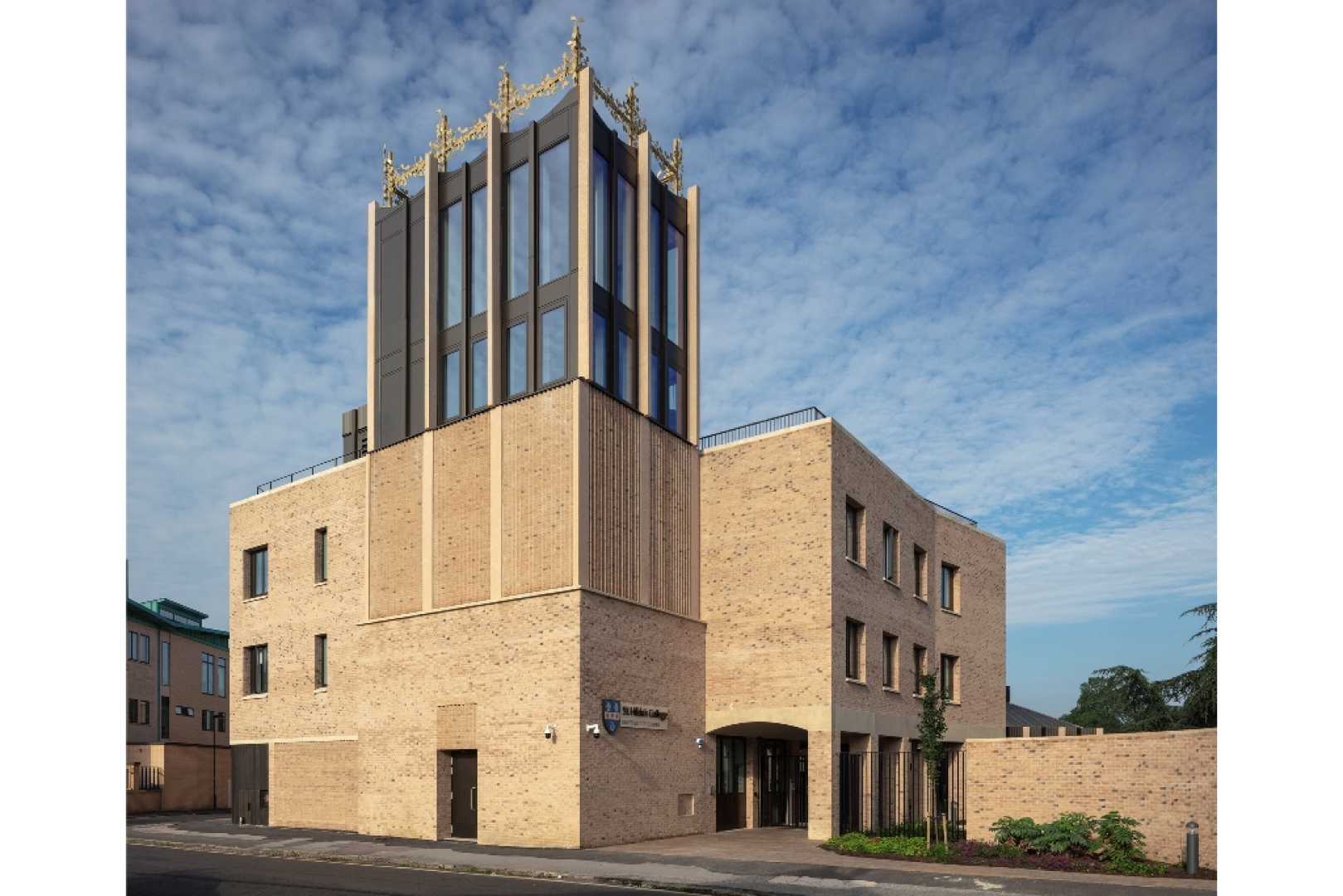Education
Bizarre New College Spire in Oxford Sparks Mixed Reactions

Oxford, England – A strikingly unconventional tower featuring rhubarb and custard colors, adorned with carvings of various animals, has made a notable addition to the skyline of Oxford’s New College. Designed by architect David Kohn, the tower stands as a reflection of contemporary challenges such as climate change and biodiversity loss, arising from the insights gained during the COVID-19 pandemic.
“I was thinking, ‘How do you mark Covid in a building?’” said Kohn. The architect’s vision includes a carved stone pangolin clinging to the tower’s summit, representing an animal that gained notoriety during pandemic-related discussions. Alongside the pangolin are carvings of an octopus, a moth, and other endangered species, emphasizing the urgent need for conservation.
The £72 million complex housing student accommodations and additional facilities is one of the most distinctive developments in Oxford in recent memory, nestled between existing Edwardian villas at the outskirts of north Oxford. The serpentine structure, adorned with an undulating roof, curves gently around established flora, creating three internal courtyards.
“It has been a bit of a Marmite building,” acknowledged Miles Young, warden of New College, alluding to the polarized opinions surrounding the design. Some residents struggled to articulate their feelings about the striking tower, which has provoked discomfort among the unfamiliar.
Kohn describes his work as open to interpretation, allowing the building to tell multiple stories. He referenced a window shaped to evoke theatrical curtains, providing dramatic views of the surrounding city, and noted how his design was inspired by the history of building developments within the college itself.
The new structure contrasts sharply with New College’s long-standing architectural ethos, marking a significant departure from its historical designs. Young recalled previous, unsuccessful attempts to modernize the college’s facilities, stating that while some earlier proposals resembled “something out of Nuremberg in the 1930s,” Kohn’s design is both original and respectful to the site’s heritage.
Historic England commended Kohn’s work for its potential to bring joy, while the city’s design review panel even suggested increasing the tower’s height to better align it with other college structures. Kohn’s approach draws on the historical timeline of New College, known for having created several pioneering architectural firsts.
Inside the complex, the whimsical design continues, with oversized features, irregularly placed windows, and communal spaces that enhance the fairytale-like atmosphere. Students have expressed excitement regarding their unique living arrangements and the vibrant study spaces available.
Nevertheless, not all elements of the structure meet high expectations. The interior design has faced criticism, with certain aspects appearing less polished than anticipated given the substantial budget. These construction challenges have raised questions about the feasibility of some architectural goals.
Overall, Kohn’s addition to New College represents both a bold leap into the future and a conversation starter about the role of architecture in representing contemporary societal issues. The institution’s history of innovation and adaptation continues, even as it embraces this striking, new chapter of its architectural narrative.












